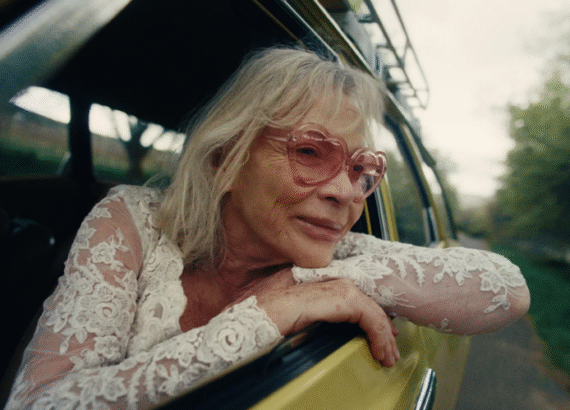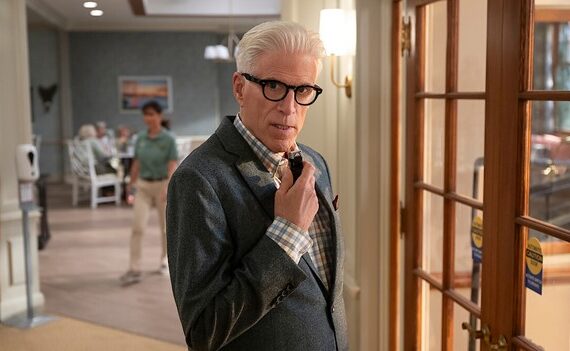A Kind of Madness

Love and Connection in the Storm of Dementia
Film: A Kind of Madness
Director: Christiaan Olwagen
Producer: Wolflight Films
Distributor: Amazon Prime
Release Date: 2025
The one-line description of this movie most often used to describe it goes like this: “A 70-year-old man abducts his wife from her retirement home and goes on the run from their adult children.” The trailer for the film dramatically reinforces that description.
I’ve learned not to trust one-line descriptions and two-minute trailers. However, they do influence my first assumptions about a film. Therefore, after reading the one-liner and seeing the trailer, I was expecting some predictable plot involving a heroic escape from the confines of a residential care facility. Thankfully, A Kind of Madness offers a richly layered alternative to that tired plotline.
Set in South Africa, the film presents an entertainingly dramatic story built around the deep connection between a long-married couple. Elna Hart (Sandra Prinsloo) has been placed in a residential care facility by her three adult children, presumably because the symptoms of her dementia have become unmanageable. In one of the early scenes of the film Elna becomes extremely agitated and out of control, and the facility calls her husband, Dan (Ian Roberts), to come and talk with her. In the conversation with her husband, Elna is lucid and insistent. “I am not crazy. I am not sick. I am still me. And I don’t belong in this place, and you know it.” Dan listens and takes action. After feigning a need to go outside to smoke, the couple manages to outrun staff and drive off in their old Ford station wagon.
When the couple’s adult children, Lucy (Erica Wessels), Olivia (Amy Louise Wilson), and Ralph (Evan Hengst), learn of the “kidnapping,” they call their father and try to reason with him. “If you bring her back we can talk options.” Dan is blunt in his response. “Never! Just get one thing straight. I will never take that beautiful woman back to that place.” (We also learn in that conversation with his children that Dan had felt pressured and bullied into agreeing to have Elna placed in the care facility.)
The children do not give up. They enable a way to track their father’s cell phone, and set off after their parents. This chase, which occasionally borders on humorous, provides much of the structure and plotline for the rest of the film. But it is what lies within this basic framework that gives the film its unusual power. Elna does not maintain the lucidity she displayed when talking with her husband in the care facility. Once she is in the car, she repeatedly experiences her escape with Dan as an earlier time in her life when she ran away with him after her family tried to stop them from getting married.
The first indication of this is when Elna wanders off during a stop at a gas station. After ambling into a clothing store, she sees a wedding dress. She tries on the dress and then runs out of the store just as Dan, who has been looking for her, slowly drives by. With the store clerk chasing Elna, Dan is caught by surprise; he opens the car door for Elna, and they quickly drive off. A bit later, Dan looks at Elna and asks, “So can you tell me why you’re wearing that thing?” Elna responds, “What do you mean? The plan hasn’t changed. I’m still going to marry you. I don’t care what my parents say. What do you say we do it at Walker Bay? And after the wedding we just get onto your boat, and we just sail into the blue and beyond?” Dan is now aware that Elna is experiencing another reality. He quickly adjusts his own mindset and goes along with what Elna is experiencing (Figure 1).
Elna wears the long white wedding dress for the rest of the film. It becomes the dominant object that keeps her semi-anchored in the past as she accompanies Dan on the ever-changing circumstances of their escape from their children–including a rather bizarre boat chase across a lake, and a trek through some unknown woodlands. The film deftly cuts between young Elna and older Elna as the escape unfolds. When their children ultimately catch up to them, she confuses her children with her family from her earlier life and thinks that they are trying to prevent her from marrying Dan. She curses at her children, and at one point, threatens them with a gun. One of the adult children, Lucy, is a psychotherapist. She can understand Elna’s behavior. Olivia and Ralph have a harder time accepting the anger and vitriol that Elna spews at them.
The three siblings have their own conflicted dynamic to work out as they try to decide how to deal with their fleeing parents. The film spends a fair amount of time portraying these inter-sibling conflicts, and this provides additional richness to the film’s story. Each sibling finally come to terms with their parents’ determination not to return Elna to the facility. An exchange between Ralph and Lucy epitomizes the frequent dilemma faced by adult children of older ailing parents. Ralph says, “It’s clear what they want. It’s time that we respect that.” Lucy responds, “These humans are our parents, and it is our duty to look after them and to care for them and to love them no matter fucking what.” Ralph responds, “By locking them up? What are we doing? Are we keeping them safe or keeping them prisoner?”
During her excursion with Dan, Elna experiences frequent delusions where she sees a woman in a long red dress singing opera arias in a loud soprano voice. These images become increasingly threatening for Elna. Perhaps they mirror in a dreamlike fashion the threat of the dementia inhabiting her mind. She struggles to cope with these visions until in one climactic scene this woman in red holds up a mirror in which Elna, while experiencing herself as younger, sees her older self. In this powerful scene, Elna seems to clearly understand what is happening in her mind. She recognizes the severity of the dementia syndrome she is experiencing. She sobs to Dan that she cannot go on; that everything is wrong. Dan, ever consoling and faithful, says, “I don’t care; I’m never leaving your side. Where you go, I go. And if that means losing our minds, we’ll lose them together.”
By this point in the film, as a viewer, you might be either standing back and critiquing the credibility and realism of what is playing out in the story, or you might be caught up in the passion of what the film represents about dementia, love and intimate connection. In my first viewing of the film, I was on the fence, both standing back with some incredulity but also feeling caught up in the passion. In the second and third viewing, because the film is so well-scripted and well-acted, I let all the incredulity go and went with the flow of the passion.
The film concludes with two sequential scenes where Elna’s delusions merge with the external events going on around her. She encounters the setting for an imminent wedding on a beach and assumes the wedding is hers. She takes the flowers from the bride-to-be and walks through the attendees to the front where the wedding official is waiting. At the same time, Dan and her children, who have been searching for her, arrive on the scene. Everyone—Dan, her children, and the bride-to-be–understands what is happening and they all accommodate Elna’s delusion. She and Dan say their vows and everyone claps and cheers.
The film then cuts to the final “escape.” Dan and Elna set off in his sailing sloop. His children, having finally come to terms with letting go of controlling what they want for their mother’s safety, allow her to have the freedom she needs. As Elna says goodbye to her children, her perception shifts from seeing them as strangers who were at her wedding, to seeing them as her young children. As the sloop pulls away, she calls out her love for them and they tearfully respond with their affirmations of love for her.
The film has literally ended with Dan and Elna sailing off into the “blue and beyond”—the very thing that Elna suggested to Dan in the car when he asked her why she was wearing a wedding dress. By this time in the viewing of the film, we may no longer be embedded in the need for reality. Elna’s reality has collided so many times with actual reality that you may be able to overlook which reality is right for the film’s ending. It is a tribute to the director and the actors that this film has so effectively immersed us in the reality of a character living with dementia that we might accept at some level, without knowing the details of how Dan and Elna will survive as they sail away, the fantasy of their ultimate togetherness.
– Jim Vanden Bosch
Oxford University Press / The Gerontological Society of America. Reproduced with permission of the author. Originally published in The Gerontologist, Volume 65, Issue 9, September 2025, gnaf183, https://doi.org/10.1093/geront/gnaf183.




